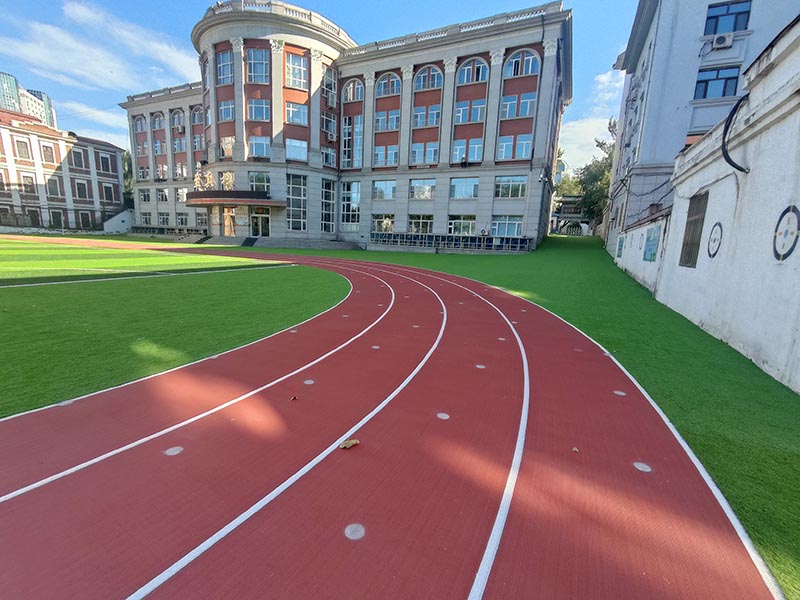Aug . 13, 2024 09:40 Back to list
Best Flooring Options for Home Gyms to Enhance Your Workout Experience and Comfort
Choosing the Right Flooring for Your Gym Room
Creating the perfect gym room at home can be an exciting endeavor, but one of the most crucial decisions you’ll make in the process is selecting the right flooring. The flooring you choose has a significant impact on the overall functionality, safety, and aesthetic of your workout space. With a multitude of options available, understanding the advantages and disadvantages of each type of flooring will help you make an informed decision tailored to your fitness needs.
Benefits of Quality Flooring
First and foremost, the primary purpose of gym flooring is to provide a safe surface that minimizes the risk of injury during exercise. Shock-absorbent flooring helps reduce the impact on joints while performing high-intensity workouts such as jumping or weightlifting. Additionally, proper flooring can improve stability and grip, reducing the likelihood of slips and falls.
Another crucial factor is cleanliness and maintenance. Gym flooring should be easy to clean and resistant to moisture, sweat, and spills. High-quality materials often come with built-in antimicrobial properties, ensuring a hygienic environment for your workouts. Additionally, some options are designed with textured surfaces to minimize slippage, providing that extra assurance during vigorous activities.
Popular Gym Flooring Options
1. Rubber Flooring One of the most popular choices for home gym flooring, rubber offers excellent shock absorption, durability, and is often resistant to water. Available in rolls, tiles, or mats, it can cater to various workout types, from high-impact cardio to heavy weightlifting. Its non-slip nature ensures safety, while its resilience allows it to endure the weight of gym equipment and heavy foot traffic. The downside is that rubber flooring can be more expensive than other options and might have a rubbery smell when first installed.
gym room flooring

2. Foam Flooring Foam tiles are lightweight and highly versatile, making them great for home gyms that may hold different types of workouts. They are easy to install and can be rearranged as needed. Foam provides good cushioning and is comfortable for activities like yoga or Pilates. However, they may not be suitable for heavy equipment or high-impact workouts, as they can compress over time and require more frequent replacement.
3. Vinyl Flooring Vinyl is another popular choice for gym flooring, particularly for its affordability and ease of maintenance. It comes in various designs and colors, allowing you to customize your space. Vinyl flooring can mimic the look of hardwood or tile, adding an aesthetically pleasing element to your gym. However, it may lack the shock-absorption qualities needed for heavy workouts, and depending on the quality, it can wear down quickly.
4. Carpet Tiles For a softer feel, carpet tiles can be a suitable option, particularly for low-impact exercises. They are comfortable underfoot and provide additional insulation. However, they are also more challenging to clean and maintain, as they can absorb odors and stains, making them less ideal for high-intensity zones.
Making the Final Decision
When choosing the best flooring for your gym room, consider your workout style, frequency, and any specific needs. Think about the types of exercises you will perform, the equipment you will use, and the overall ambiance you wish to create in your space.
In conclusion, investing in quality gym flooring is essential for creating a conducive workout environment. By evaluating options such as rubber, foam, vinyl, and carpet tiles, you can make a choice that balances safety, functionality, and aesthetics to suit your fitness journey. Whether you’re lifting weights, practicing yoga, or conducting a high-intensity interval training session, the right flooring will provide the foundation for success in your home gym.
-
Premium Outdoor Tennis Court | Durable & Weather-Resistant
NewsAug.03,2025
-
Wood Sports Flooring Enhanced by GPT-4-Turbo | Top Performance
NewsAug.02,2025
-
Sport Court Tiles with AI Innovation | Durable & Safe
NewsAug.01,2025
-
Vinyl Carpet Flooring | Durable & Waterproof Design
NewsJul.31,2025
-
Premium Basketball Board Stand with GPT-4-Turbo AI
NewsJul.31,2025
-
Premium Maple Flooring for Gyms & Homes | PVC & Vinyl Options
NewsJul.30,2025

